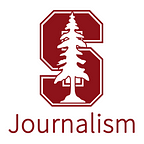Seeing is believing: Tamara Munzner’s keynote on visualization and journalism
By Jonathan Wosen
Sometimes, the best way to illustrate a point is to literally illustrate a point.
On Saturday, University of British Columbia Computer Science Professor Tamara Munzner delivered the final keynote of Stanford’s Computation + Journalism Symposium. Munzner described how visualization tools are helping journalists research and present the stories of the 21st century.
Munzner’s talk, titled “Visualization and Journalism: Four Vignettes,” featured two examples of visualization tools, Overview and TimeLineCurator, and two cautionary tales about the usage of color and depth.
“That’s the ride we’re going to be on. Fasten your seatbelts, and let’s launch,” said Munzner.
The first tool, Overview, is an open-source application Munzner co-created for investigating massive document sets.
Overview rapidly organizes documents into folders based on common terms found in some, most, or all of the documents. Users can perform a broad survey, find specific documents, or, as Munzner put it, prove that “a haystack has no needles” because a crucial document is absent.
Journalists have used Overview to write stories on police misconduct, private security contractors in Iraq, and credit card companies.
“When I covered Iraq security contractor documents for the AP (Associated Press), having the computer group documents into different types of incidents allowed me to get a big picture view. I had nearly 5,000 pages of documents; it (Overview) was an entry into that that was much faster,” said Jonathan Stray, fellow co-creator of Overview and a research scholar at the Columbia School of Journalism.
Munzer helped created a second visualization tool, TimeLineCurator, for journalists to rapidly generate timelines from unstructured documents.
A journalist can edit and annotate the timeline with words and pictures, and can overlay multiple timelines. TimeLineCurator allows users to perform “speculative browsing,” and can quickly determine if a document contains relevant information for a timeline, Munzner said.
Munzner also stressed the importance of thinking carefully about the use of color and depth in visualization. To make her point, she showed a figure in which biologists used color-coding to map mouse genes onto human chromosomes. The result was bright blocks of over a dozen colors stacked on top of each other. The result was colorful but confusing.
Her talk drew on 25 years of experience in visualization research, including time at Stanford, where she received an undergraduate degree and then a doctorate in computer science. She has published over 60 papers, written an award-winning book on visualization, and co-chaired visualization conferences in both Europe and the United States.
Going forward, Munzner is optimistic about the mutual benefits of collaboration between visualization researchers and journalists.
“If these (visualization) tools are good enough, we get success stories that let us get our research published and you get better tools that are more customized for the things that you want to do,” she said.
Jonathan Wosen is a student reporter at Stanford University.
